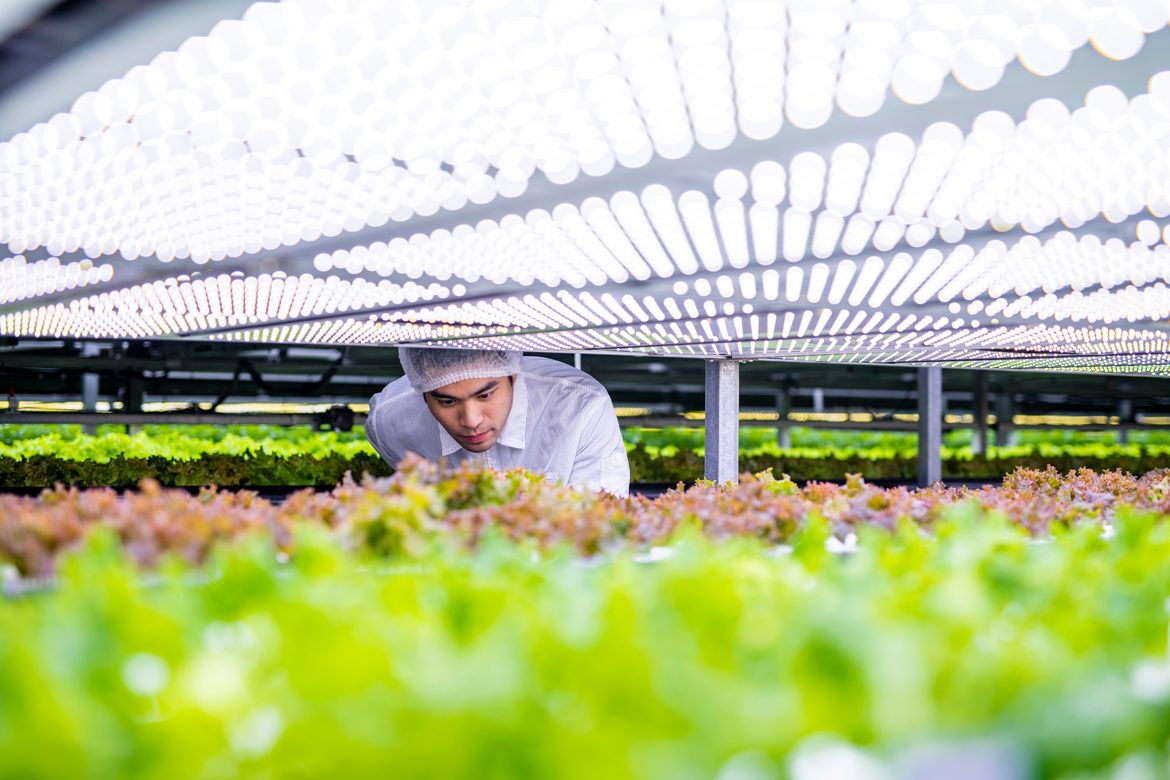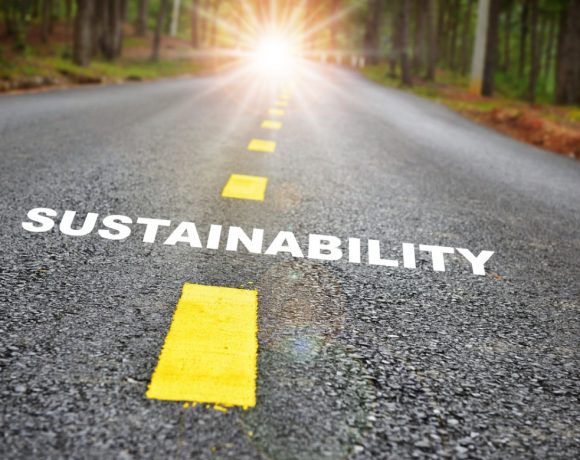- In 2019, Singapore ranked number 1 in the world in the Global Food Security Index for the second year running. However, it currently imports over 90% of its food from more than 170 countries and is highly dependent on external sources.
- In 2019, Environment and Water Resources Minister Masagos Zulkifli announced the Singapore Food Agency’s (SFA) ambitious goal to produce 30% of Singapore’s nutritional needs locally by 2030, up from less than 10% currently. To achieve this ‘30 by 30’ goal, SFA will work with the agri-food industry to transform into one that is highly productive and employs climate-resilient, resource-efficient and sustainable technologies.
- SFA is also looking into transforming the aquaculture zones in the Straits of Johor (the waterway between Singapore and Malaysia) to support higher production levels, as well as tapping the deeper Southern Waters of Singapore to boost local fish production.
According to projections by the United Nations, the world population is expected to grow by another two billion in the next 30 years and the demand for food is predicted to increase exponentially. At the same time, the Intergovernmental Panel on Climate Change estimates widespread declines in crop yields due to global warming.
Singapore, which currently imports over 90% of its food from more than 170 countries, wants to be less vulnerable to the volatility of the global food market. In 2019, Singapore ranked number 1 in the world in the Global Food Security Index for the second year running. However, it is highly dependent on these external sources. To strengthen Singapore’s food security, the Singapore Food Agency (SFA) is pursuing three broad strategies called the 3 Food Baskets:
– Diversify import sources: to reduce risk of reliance on any single food supply source
– Grow local: to provide buffer supply in the event of overseas supply disruptions
– Grow overseas: to help local companies expand abroad and export food back.
With the ongoing COVID-19 pandemic highlighting how diversifying food sources may not be enough to ensure a stable supply, Singapore is stepping up efforts to grow more food locally. Singapore is a small city-state of 5.7 million inhabitants with only around 720 square kilometres of land (roughly the size of Lake Geneva). Population density is high. Space for agriculture is limited. Nonetheless, in 2019, Environment and Water Resources Minister Masagos Zulkifli announced SFA’s ambitious goal to produce 30% of Singapore’s nutritional needs locally by 2030, up from less than 10% currently. There were a total of 220 local farms in 2019, collectively producing 14% of Singapore’s leafy vegetables, 26% eggs and 10% fish consumption. To achieve this ‘30 by 30’ goal, SFA will work with the agri-food industry to transform into one that is highly productive and employs climate-resilient, resource-efficient and sustainable technologies. This will include indoor growing technologies such as hydroponic, vertical farming, vegetables cultivated in climate-controlled greenhouses under special LED lighting to maximise yields, and fish farmed at sea in contained systems to protect them against toxic algae blooms and oil spills. Technology is the key enabler to help farms to ‘grow more with less’ and will help to produce 10 to 15 times more than traditional outfits. Besides being highly productive, such farming technologies have the important additional advantage of being resilient against climate change.
SFA has also been tendering agricultural land to agri-food companies who compete based on technology, productivity and track record, since 2017. This is meant to ensure that those with the best concepts – concepts that employ innovative and productive technologies to maximise food production – are awarded the land. In addition, SFA has been looking at unlocking more alternative spaces locally, such as vacant state properties and rooftops. In 2019, SFA successfully launched a pilot project and worked with an urban farming firm to construct a 1,800-square-metre farm on top of a multi-storey carpark. The farm currently grows up to four tonnes of vegetables monthly which are sold in a nearby supermarket. On 12 May 2020, SFA launched a tender for rooftop sites on multi-storey car parks for urban rooftop farming. Commercial urban farms have the added advantage of bringing agriculture closer to Singaporeans and attuning them to SFA’s efforts to ensure food security.
In September 2020, the SFA under Ms Fu’s ministry, awarded close to S$40 million (~27 million CHF) under its 30X30 express grant to 9 urban farms, as part of efforts to ramp up local food production over the next 2 years. The funds will go towards projects such as building additional greenhouses, leveraging technology and automation to reduce manpower, and bringing artificial intelligence (AI) to high-tech farms. For instance, I.F.F.I, one of the farms who was awarded the grant, will set up a mega high-tech indoor vegetable farm that depends on AI to monitor the growth of its leafy greens, along with an advanced environmental control system to ensure optimum yield all year round. The farm will also use an innovative water treatment system that reduces the amount of bacteria in the crops and extends the shelf life of its produce.
Over S$55 million (~37 million CHF) was also set aside in 2020 by Enterprise Singapore (ESG) to help local agriculture and aquaculture companies build new capabilities and innovate to grow more with less. For example, homegrown startup Singrow is working closely with ESG for its expansion plans. The ESG Startup Accelerator programme helped Singrow develop innovative cultivation methods to grow strawberries. Set in a repurposed sports hall with a 6.5m-tall ceiling, the company’s indoor farm spans 500 sqm. The startup was co-founded by two scientists from the National University of Singapore (NUS), Dr Bao Shengjie and Dr Xu Tao. It has developed a vertical farming solution that addresses every stage of a plant’s agricultural journey, from breeding to harvesting, and is able to produce approximately 1,200kg to 1,600 kg of strawberries per year – double than that of its closest competitors from Japan. According to Dr Bao Shengjie, the controlled environment of the indoor farm – lighting, temperature, concentration of carbon dioxide and the acidity of the soil made of coconut peat – has helped reduce the time needed to cultivate the strawberries by around 30 per cent. Once the workflow is fully automated, the company will be able to achieve nine harvests a year. Dr Bao added that Singrow plans to establish a larger facility for commercial crop production by early 2022, and has set its sights on expanding into overseas markets such as China, Indonesia, Malaysia and Vietnam.
SFA is also looking into transforming the aquaculture zones in the Straits of Johor (the waterway between Singapore and Malaysia) to support higher production levels, as well as tapping the deeper Southern Waters of Singapore to boost local fish production. SFA is currently engaging nature groups on raising local fish production while mitigating the impact on the marine environment. For instance, local barramundi farm Barramundi Asia scaled up its operations in 2019 with a new $2 million extension to its nursery. With this extension, the farm expects to increase its fish production threefold, to almost 1.8 million fish fry per year. That will bring the farm’s expected yield to 6,000 tonnes of fish yearly, which is more than what Singapore’s 120 fish farms produced in 2018. Barramundi Asia’s vision is to become the world’s largest supplier of sustainable barramundi.
True to Singapore’s ‘all hands on deck’ approach, institutes of higher learning are ramping up courses and training in the field to train more farmers of the future. Temasek Polytechnic, for example, will be launching a Centre of Innovation in Aquaculture.
Mr Alvin Tan, Minister of State for Trade and Industry, mentioned at the virtual Asia-Pacific Agri-Food Innovation Summit 2020, that “Singapore’s efforts to boost its agri-food industry have caught the attention of local and foreign investors and innovators. Companies from around the world are anchoring new agri-food capabilities in Singapore and these investments will help the city state to achieve their vision of becoming a leading hub for agri-food tech innovation.”
Potential synergies and collaboration exist between Singapore and Switzerland, as Switzerland is a world reference in sustainable food and nutrition innovation. The Swiss Food & Nutrition Valley (SFNV) is a unique ecosystem addressing major challenges on the future of food and nutrition from a sustainability perspective, using cutting-edge science and technology. Swiss food companies already have a strong presence in Singapore. At the end of last year, Nestlé’s R&D Center celebrated its 40 years of presence in Singapore and it will soon open a new R&D accelerator, where ideas will be brought to reality in a reduced length of time. Food processing technology giant Bühler and major flavour and fragrance manufacturer Givaudan are planning to launch a new Innovation Center early this year dedicated to plant-based food in Singapore. The facility will host food-processing companies, startups and scientific researchers developing new plant-based food products. The two companies, both based in Switzerland, say the goal of the facility is to come up with sustainable food solutions to feed the rapidly growing global population and the challenges that climate change will bring. Considering how much Singapore is putting into the sector, the choice of location is hardly surprising.






NO COMMENT